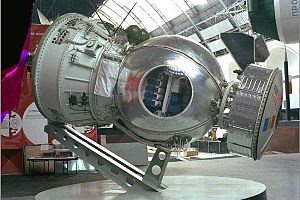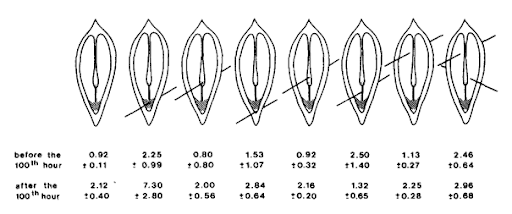Cosmos/Kosmos Biosatellites
Spaceflight Research Tool

- Full Name: Cosmos or Kosmos
- A.K.A: Bion 3
- Affiliation: USSR Space Program
- Country: Russia
- Focus Areas: Astrobiology Research
- Type: Spaceflight
- In Service: 1966 – 1979 (Astrobotany Related Missions)
- Astrobotany Related Payloads:
-
- Carrot Tissue
- Arabidopsis and succulent plants
- Wheat, barley, pine, lettuce, and tobacco seeds
-

Summary
The Cosmos (or Kosmos) biosatellites were a series of Soviet and Russian satellites designed to carry plants, animals, and microorganisms into space for research purposes. They were used during the early days of space research to understand how organisms acclimate and adapt to weightlessness. Unlike their short-lived predecessors, many of these satellites flew for 20 days or more. This was a considerably longer duration of time than the space shuttle flights, so biosatellites were very useful for longer-term studies, especially with plants.
Most of these biosatellites held experiments with animals and microorganisms, with very few plant experiments. For this article, we will only list the biosatellites with payloads related to astrobotany. Unfortunately, most of this literature was published over 40 years ago and is difficult to access, so we will continue to update this page as we uncover more information about these biosatellites. If you have any relevant information that is not listed on this page, please let us know!
1966, February 22nd: Kosmos 110: Contained allium bulbs, a succulent plant, and seeds of several species including wheat, barley, and pine. Duration 22 days.
- “Examinations of dry seeds of wheat, barley, pine, and other plants, as well as of Allium cepa bulbs, gave evidence of a diverse effect of space flight factors on both physiological processes and hereditary structures of the objects. In some cases, an increased percentage of seed germination, stimulation of their growth, and a significant increase of aberrations were found.”
- “A postflight examination of the appearance of the Tradescantia paludosa plant showed that it retained good turgor; its leaves were dark green and several bright flowers bloomed. No signs of inhibition or etiolation were noted. As compared to the control, the test plant grew noticeably and the stem became crooked.”
1975, November 25th: Cosmos 782 (Bion 3): Contained carrot tissues, grafted plant tissues, and seedlings for spatial orientation studies. Duration 19.5 days.
- They studied plant tissues with grafted cancerous growths and also studied carrot tissues.
- “Plants experiments studied the spatial orientation of over and underground organs of Pinus sylvestris and Crepis capillaris seeds.”
- “Other investigations used Phycomyces blakesleanus to compare spatial orientation and growth and development in weightlessness and artificial gravity.”
1979, September 25th: Cosmos 1129: Contained carrot tissues and cells, arabidopsis plants, and seeds from lettuce and tobacco. Duration 19 days
- The Cosmos 1129 biosatellite also aided in some of the first space plant reproduction research. In one experiment, Arabidopsis plants were grown on Earth until the flowering stage, then were launched into space to complete their growth and reproduction. Although the plants produced seeds during spaceflight, these seeds had low fertility rates and higher rates of mortality than Earth-only plants.
- Some seeds were also germinated in space, including lettuce and tobacco seeds on Cosmos 1129. Surprisingly, the weightlessness seemed to increase tobacco germination rate, though it also caused some genetic damage, and more mutations and abnormalities were observed in the seedlings.
Additional Resources
- Investigations on biosatellites of the Cosmos series.
- “From Seed to Seed” Experiment with Wheat Plants Under Space-Flight Conditions
- Results on Artemia cysts, lettuce, and tobacco seeds in the biobloc 4 experiment flown aboard the Soviet biosatellite Cosmos 1129
- Programs, Missions, and Payloads: The Cosmos Biosatellite Program
- Biological investigations aboard biosatellite Cosmos-782.
- Some results of radiobiological studies performed on Cosmos-110 biosatellite.
- The Cosmos biosatellite: achievements and research outlook
- NASA Space Science Data Coordinated Archive: Bion 3
